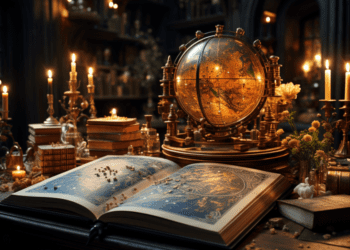“Until you make the unconscious conscious, it will direct your life and you will call it fate.” Carl Jung’s timeless words remind us that exploring the hidden layers of the mind unlocks profound personal power. His groundbreaking work in psychology revealed archetypes – universal symbols embedded in humanity’s collective unconscious – that shape thoughts, behaviors, and life paths.
These ancient patterns, like the Hero or the Shadow, exist within every individual. They influence how we navigate challenges, build relationships, and perceive the world. By understanding them, you gain a roadmap to decode your psyche’s deepest motivations.
Jungian archetypes bridge ancient wisdom and modern life. They reveal why certain stories resonate across cultures or why specific traits emerge in your personality. Recognizing these symbols isn’t just intellectual – it’s transformative. It helps you confront limiting beliefs while amplifying strengths hidden in your subconscious.
This journey requires examining both light and shadow aspects of the self. Historical figures like Mandela harnessed archetypal energy for societal change. Today, professionals use these insights to improve leadership skills and emotional intelligence.
Key Takeaways
- Carl Jung identified archetypes as universal patterns in humanity’s collective unconscious
- These symbols shape personal narratives and influence decision-making processes
- Understanding archetypes provides tools for self-awareness and behavioral change
- Balancing light/shadow aspects fosters holistic personal development
- Archetypal wisdom applies to modern challenges in relationships and careers
Understanding Jungian Archetypes: Foundations and Key Concepts
Beneath individual experiences lies a shared psychological layer Carl Jung called the collective unconscious – a reservoir of ancestral memories and symbols common to all humans. These universal patterns, encoded in myths and cultural narratives, form the blueprint of our inner world. Like invisible threads connecting generations, they shape perceptions and reactions before conscious thought intervenes.
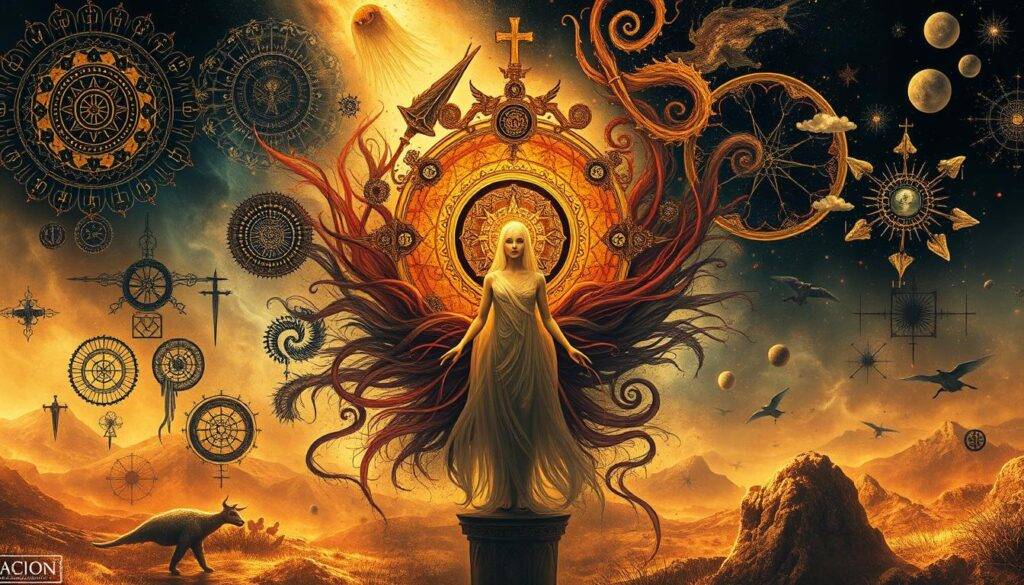
The Collective Unconscious and Universal Symbols
Jung observed recurring themes in global folklore and religious art – the wise mentor, the rebellious trickster, the nurturing mother. These archetypes aren’t learned but inherited, acting as primal templates for human behavior. Modern psychology recognizes their influence in everything from career choices to relationship dynamics.
Key Archetypes: Hero, Shadow, Wise Old Man/Woman, and More
The Hero archetype drives personal growth through challenges, visible in myths like Odysseus’ journey. Conversely, the Shadow represents repressed traits – a concept mirrored in literature’s Dr. Jekyll and Mr. Hyde. The Wise Old Man/Woman embodies accumulated knowledge, appearing as mentors like Yoda in Star Wars.
These psychological forces hold dual potential. The Hero’s courage can become recklessness; the Shadow’s darkness hides creative sparks. Recognizing them fosters balanced self-awareness – seeing both the mask we present and the hidden aspects yearning for integration.
Step-by-Step: how to use Jungian archetypes for self-growth
Personal transformation begins with recognizing recurring psychological themes. Carl Jung noted that universal symbols in the collective unconscious surface through dreams and creative expressions. By tracking these patterns, you gain keys to unlock hidden aspects of your personality.
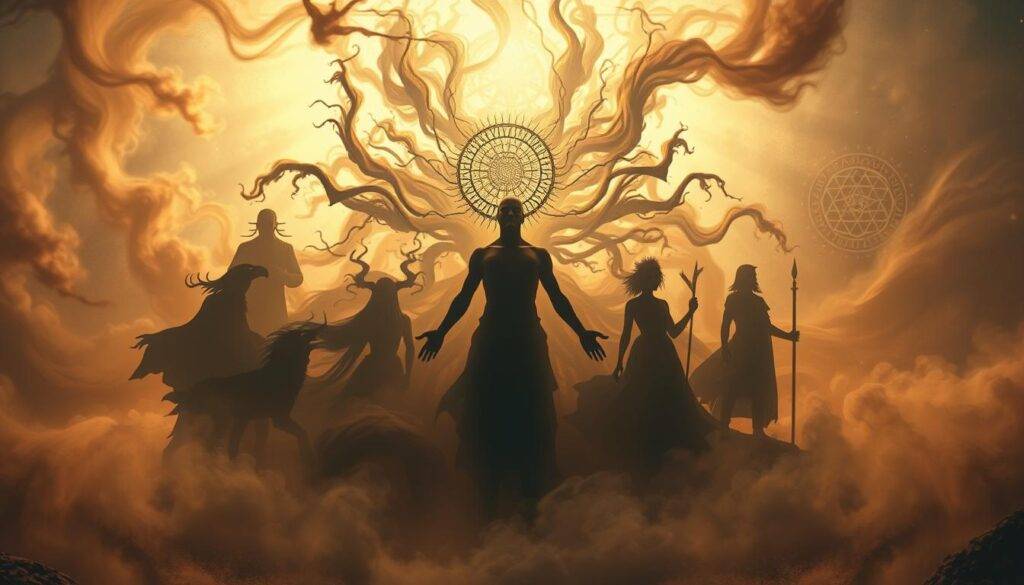
Three-Step Framework for Pattern Recognition
Start with a dream journal. Record recurring symbols upon waking – animals, landscapes, or mysterious figures often mirror archetypal energies. A marketing director once discovered her Inner Warrior through repeated battle imagery, reshaping her leadership approach.
Next, analyze emotional triggers. Strong reactions to others often reflect unclaimed parts of yourself. If a colleague’s boldness irritates you, it might signal your suppressed Hero archetype craving expression.
| Method | Purpose | Example Insight |
|---|---|---|
| Guided Visualization | Access subconscious symbols | Meeting a Wise Elder figure during meditation |
| Behavior Tracking | Identify dominant patterns | Consistent rescuer role in relationships |
| Myth Comparison | Contextualize personal journey | Parallels with Persephone’s underworld descent |
Finally, create an archetype profile. List traits you admire and reject – this polarity reveals active patterns. A nurse recognizing her constant caregiving connected it to the Nurturer archetype, then balanced it with Explorer energy through hiking.
Weekly mindfulness checks maintain awareness. Ask: “Which archetype is driving my choices today?” This practice builds psychological flexibility, helping you consciously choose responses rather than repeat old scripts.
Integrating Archetypal Wisdom into Everyday Life
Daily routines become gateways to self-discovery when viewed through archetypal lenses. Simple practices rooted in Carl Jung’s work help bridge symbolic insights with tangible actions, creating ripple effects across thoughts, emotions, and relationships.

Practical Exercises for Daily Reflection
Begin mornings with archetype alignment. Ask: “Which energy wants to guide me today?” A teacher might invoke the Sage before lectures; a parent could channel the Nurturer during family time. Keep a pocket notebook to track:
- Recurring emotional triggers signaling Shadow aspects
- Moments of flow revealing dominant archetypes
- Interactions mirroring unexpressed traits
Cultivating Self-Awareness Through Archetypal Practices
Try this evening ritual: Visualize conversing with your Wise Elder archetype. What guidance emerges? One executive discovered her inner Sovereign this way, transforming decision-making patterns within weeks.
| Practice | Frequency | Growth Focus |
|---|---|---|
| Symbol Journaling | Daily | Pattern recognition |
| Archetype Meditation | 3x/week | Inner balance |
| Myth Analysis | Weekly | Contextual understanding |
Consistency matters more than duration. Five minutes of focused reflection often reveals more than hour-long sessions. As Jung noted, “Your vision will become clear only when you look into your heart.” Small steps build lasting bridges between symbolic wisdom and lived experience.
Exploring Archetypes in Myth, Culture, and Psychology
Stories shape civilizations – and the symbols within them reveal humanity’s shared DNA. From ancient cave paintings to streaming platforms, archetypal patterns persist as psychological landmarks guiding how societies process fear, hope, and meaning.
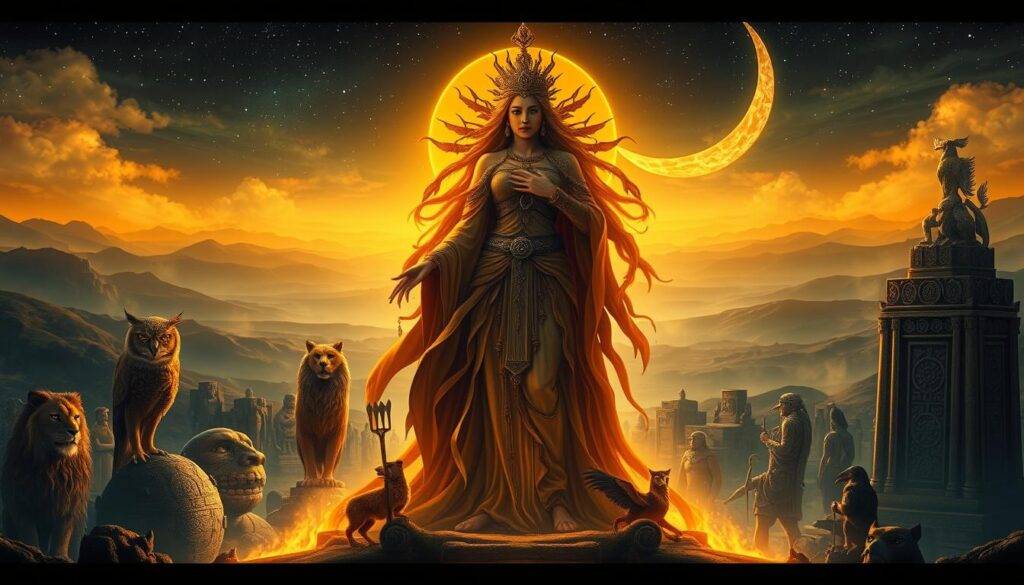
Mythical Narratives and Archetypal Symbols
Consider the Hero’s Journey – a template found in Greek epics and Marvel films alike. Odysseus and Luke Skywalker both face trials mirroring internal struggles. Carl Jung noted “myths are public dreams; dreams are private myths”, highlighting how these tales externalize subconscious battles.
Indigenous creation stories often feature Trickster figures like Coyote or Anansi. These symbols teach adaptability through humor, showing how flaws drive growth. Modern sitcom characters like Michael Scott (The Office) echo this archetype, proving their timeless relevance.
Cultural Reflections in Jungian Psychology
National identities frequently align with archetypal energies. America’s Pioneer spirit mirrors the Explorer; Japan’s emphasis on harmony reflects the Caregiver. These collective psyche expressions influence everything from advertising campaigns to political rhetoric.
Artists unconsciously channel universal desires. Beyoncé’s stage persona blends Queen and Lover energies, while Tolkien’s Gandalf embodies the Wise Elder. Recognizing these aspects in media helps decode why certain stories resonate across generations.
Jungian psychology bridges ancient wisdom and modern life. By studying myths, you gain tools to interpret personal narratives – transforming cultural mirrors into windows of self-understanding.
Therapeutic Approaches to Archetypal Integration
Therapy becomes a mirror when practitioners illuminate hidden patterns shaping behavior. By decoding symbolic language from dreams and creative expressions, therapists help clients bridge conscious intentions with subconscious drives rooted in universal symbols.
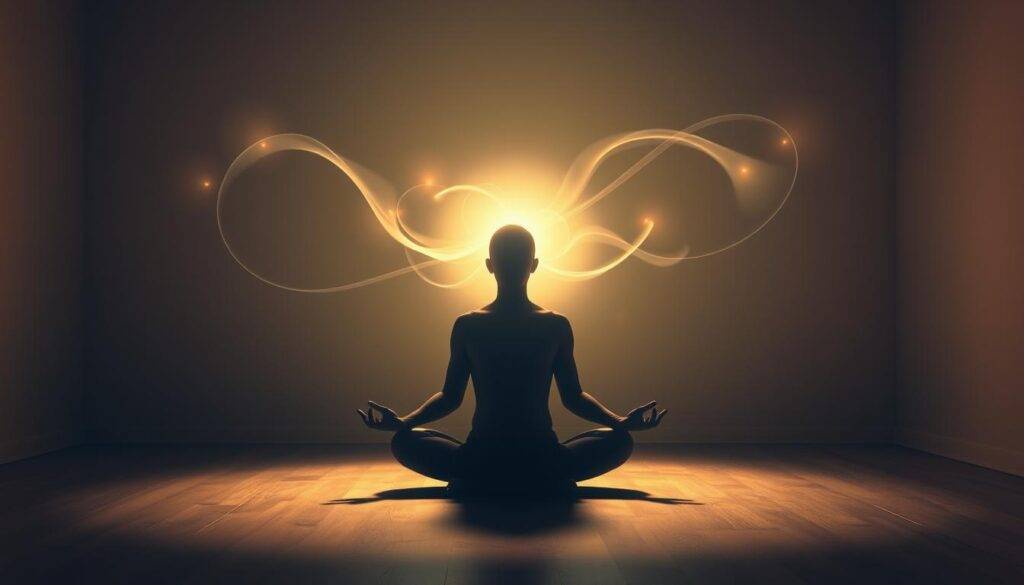
Uncovering Hidden Motivations Through Symbolic Work
Carl Jung’s methods thrive in modern therapy through active imagination and dream analysis. A client haunted by recurring snake dreams discovered her repressed Healer archetype – leading to career shifts in healthcare. Therapists often blend traditional analysis with art therapy to surface buried desires.
Shadow work proves particularly transformative. One executive resolved workplace conflicts by confronting his inner Trickster during role-play exercises. This process revealed playful creativity masked by rigid professionalism.
Effective integration requires balancing light and dark aspects. Guided visualizations help clients dialogue with archetypal figures, fostering awareness of inherited behavioral scripts. Sessions might include:
- Mapping personal myths to universal narratives
- Identifying dominant archetypes influencing relationships
- Creating art reflecting suppressed energies
As Jung observed, “The privilege of a lifetime is to become who you truly are.” Therapeutic spaces provide the guidance needed to align inherited symbols with authentic self-expression – a cornerstone of lasting personal growth.
Conclusion
The journey through Carl Jung’s archetypal landscape reveals a mirror to our deepest selves. Universal symbols like the Hero and Shadow act as guides, helping decode the psyche’s hidden language. By recognizing these patterns, individuals gain tools to rewrite limiting narratives and embrace balanced personal growth.
Start by identifying recurring themes in dreams or emotional triggers. Track behaviors through journaling, then align discoveries with timeless myths. Cultural stories and therapeutic practices – from ancient rituals to modern psychology – prove these archetypes remain vital for understanding human experiences.
True transformation happens when insights become action. Discover practical strategies to weave archetypal wisdom into daily decisions. A marketing director might channel the Creator during brainstorming sessions; a parent could invoke the Nurturer during family challenges.
Carl Jung’s work reminds us that wholeness requires acknowledging both light and shadow. Embrace your inner Sovereign’s leadership and the Explorer’s curiosity. These timeless symbols offer not just self-awareness, but a compass for living with purpose. Your story is still being written – let archetypes illuminate the path forward.
FAQ
How does Carl Jung’s concept of the collective unconscious relate to personal growth?
The collective unconscious represents inherited psychological patterns—like universal symbols and myths—shared across humanity. By exploring these patterns, individuals gain insight into recurring behaviors, desires, and emotional responses, creating a roadmap for deeper self-awareness and transformation.
Can understanding archetypes improve relationships with others?
Yes. Recognizing archetypal dynamics—such as the Hero’s need for achievement or the Caregiver’s nurturing instincts—helps decode motivations in yourself and others. This awareness fosters empathy, reduces conflict, and aligns interactions with shared psychological truths.
What practical steps help integrate archetypal wisdom into daily life?
Start by journaling recurring thoughts, emotions, or symbols in dreams. Reflect on which archetypes—like the Shadow or Sage—resonate with these patterns. Over time, this practice builds conscious alignment with your psyche’s innate wisdom, guiding decisions and behaviors toward fulfillment.
How do myths and cultural stories reflect Jungian archetypes?
Myths are mirrors of the collective unconscious, using universal symbols—like the Hero’s journey or the Wise Old Man—to convey timeless truths. Analyzing these narratives reveals how archetypes shape societal values, personal aspirations, and even modern media tropes.
Why is confronting the Shadow archetype critical for psychological growth?
The Shadow holds repressed traits or desires deemed socially unacceptable. Acknowledging it reduces internal conflict, integrates hidden strengths, and prevents self-sabotage. This process, though challenging, is essential for achieving wholeness and authenticity.
Can therapists use archetypes to address behavioral patterns?
Absolutely. Therapists often employ archetypal frameworks to help clients identify subconscious scripts influencing their actions. By reframing these patterns through archetypes like the Lover or Rebel, individuals gain clarity and agency to rewrite limiting narratives.


























































